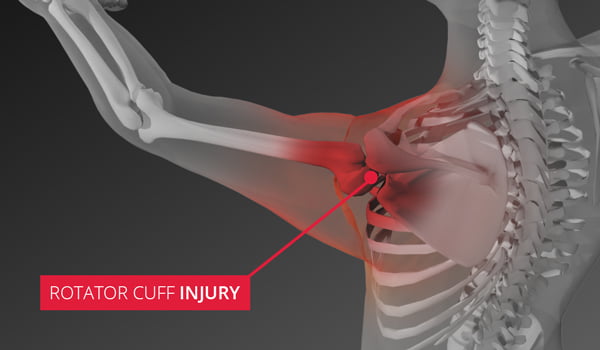
SYMPTOMS OF A ROTATOR CUFF INJURY
- Recurrent pain, especially with certain activities and at night.
- Difficulty sleeping on the injured side.
- Crepitus or crackling sensation when moving your shoulder in certain positions.
- Limited ability to move arm.
- Weakness when lifting or rotating your arm.
WHAT CAUSES A ROTATOR CUFF INJURY?
- Overuse tears from sports activity or overhead work.
- A fall on an outstretched arm.
- Auto accident with restrain by a seatbelt.
- Lifting something too heavy with a jerking motion.
DIAGNOSIS
Your doctor may able to find out what is causing your rotator cuff disorder just by interviewing you about your shoulder pain and examining your shoulder. Examination of the shoulders involves measuring the range of motion of your shoulder and a test your arm strength which will require moving your shoulder in various positions and comparing it with the unaffected side. Examination will also include your neck, as cervical injury can sometimes cause pain in the shoulder.
In addition to a complete medical history and physical examination, diagnostic procedures for a rotator cuff injury may include the following:
X-RAY
MAGNETIC RESONANCE IMAGING (MRI)
ROTATOR CUFF INJURY TREATMENT OPTIONS
TREATMENT MAY INCLUDE:
- Rest
- Nonsteroidal anti-inflammatory medications.
- Strengthening and stretching exercises.
- Ultrasound and other forms of physical therapy.
- Corticosteroid injection.
- Regenerative medicine techniques such as stem cell injections.
- Surgery (for severe injuries).
IS SURGERY NEEDED FOR A ROTATOR CUFF INJURY?
Surgery may be required if the tear was the result of a sudden injury, or when pain and weakness have not improved with steroid injections and strengthening exercises. If your pain does not improve with non-surgical methods and if you use your arms for overhead work or sports, your doctor may also suggest surgery. Surgery to repair a torn rotator cuff most often involves re-attaching the tendon to the head of humerus (upper arm bone).
As each injury is unique, so too are the different surgical procedures and approaches to repair rotator cuff injuries. Many surgical repairs can be done on an outpatient basis and do not require you to stay overnight in the hospital. Advancements in surgical techniques for rotator cuff repair include less invasive procedures. Arthroscopic shoulder surgery, or shoulder arthroscopy, is a common procedure to treat rotator cuff tears. Using the scope, an experienced surgeon who is facile with arthroscopic techniques can evaluate the entire shoulder joint and can usually fix the tear through very small incisions using specially-designed instruments and devices.
Do you have shoulder pain that may be a rotator cuff injury? Request an Appointment for a consultation with Sterling Medical Group.
